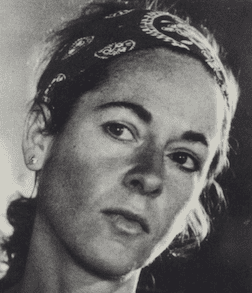____________________________________________________________________
Read The Drowned Children by Louise Glück
____________________________________________________________________
For the past few days, heavy snow has been falling on the little Western New York village where I live—the kind of soft, thick snowfall that makes you think of fairy tales. People are pulling out shovels and snow blowers to get places. People are sliding and falling, and then laughing because there is so much snow and therefore it doesn’t hurt to fall. Things have become muted—the impact of a slippery fall, the exciting pull of the impending holidays, the stress of final exams (it’s the last week of classes at the university where I teach). Each time a storm like this one hits, I love all of the hushed white. But I’m also a bit wary of it. There is something haunting about too much quiet.
Louise Glück’s “The Drowned Children” is the poem that will haunt me for the rest of my life. The speaker numbly describes the deaths of a group of children. The details are bare. The number of children is unknown. We do not know what they look like. The reader is left on her own to envision blank little faces, empty eyes, hair of indeterminate length—flat or curly. This poem does not scream pain and grief. “You see, they have no judgment,” the poem calmly begins. “And so it is natural that they should drown.” This is horrifying logic. This is cruel objectivity. This is the haunting, numbing muteness of a beautiful snowstorm just at the beginning of winter.
I have returned to fairy tales as an adult, and I am convinced that this is the genre that will teach me almost anything about my own writing. The work of contemporary fairy tale scholars such as Kate Bernheimer has led me to consider the narrative elements that any writer can and should steal from the form. When in doubt, be economical and precise. When faced with a huge, blistering moment in your story or poem, be blunt and direct. The more outrageous the plot twist or the shift in character or the mystery, be bold enough to simply tell it like it is.
Glück’s “The Drowned Children” is a fairy tale though and through. The entire poem is washed out with a quality that is “blind and weightless,” as if it has been “dreamed.” Each successive line drops us bit by bit lower and lower into the underworld, a place where the horrible moments of our lives become subdued and passive and flat.
first the ice taking them in
and then, all winter, their wool scarves
floating behind them as they sink
until at last they are quiet.
As we read, we descend a staircase into the unfathomable, trailing those wool scarves into a terrifying yet somehow soothing abyss. As a writer and as a human being, I have found surprising comfort in Glück’s project—to push into the unknown and the unimaginable and to challenge myself, through a careful preservation of distance, to find some possible root of comfort there.
Because of the numb and detached quality of “The Drowned Children,” I’ve been trying to convince myself for years that I cannot love the poem. Children are drowning, and no one is diving into the ice after them. No one is wailing with loss. No one is pounding her fists into anything. And yet I love the poem. And I know that there is some kind of succor offered here deep within its cold, aloof world. There is impossible beauty in those floating scarves. There is impossible solace in the quiet of the freezing water. There is an embrace that cannot be denied when “the pond lifts them up in its manifold dark arms.” And finally, I think that there is someone shouting out for these children at the end of the poem. Even if she is very far away, at least she is fishing for them using the lures of their lost names, trying to shout through the muffled, soft, impenetrable barrier of fairy tale: “What are you waiting for / come home, come home.”
In his introduction to his Italian Folktales, Italo Calvino insists that the intense darkness and brutality of fairy tale is not extreme; it is not meant to be flashy solely for the radical, uncomfortable thrill of it.
“…although the woods forever echo with the weeping of maidens or of forsaken brides with severed hands, gory ferocity is never gratuitous; the narrative does not dwell on the torment of the victim, not even under pretense of pity, but moves swiftly to a healing solution.”
This is what I want to learn: That there can be sharp precision in numbness. That sometimes we need that thick blanket of snow to cover every last thing up before we can even attempt to make sense of it all and look for that healing, and yes—hopefully swift, solution. Also: That darkness is an okay place to dwell.
____________________________________________________________________

SARAH GERKENSMEYER‘s story collection, What You Are Now Enjoying, was selected by Stewart O’Nan as winner of the 2012 Autumn House Press Fiction Prize and was longlisted for the Frank O’Connor International Short Story Award. A Pushcart Prize nominee and a finalist for the Katherine Anne Porter Prize in Short Fiction and the Italo Calvino Prize for Fabulist Fiction, Sarah has received scholarships to the Bread Loaf Writers’ Conference, Ragdale, Grub Street, and the Vermont Studio Center. Her stories have appeared in Guernica, B O D Y, The Coffin Factory, The Massachusetts Review, Hayden’s Ferry Review, and Cream City Review, among others. Sarah was the 2012-13 Pen Parentis Fellow. She received her MFA in fiction from Cornell University and now teaches creative writing at State University of New York at Fredonia.
